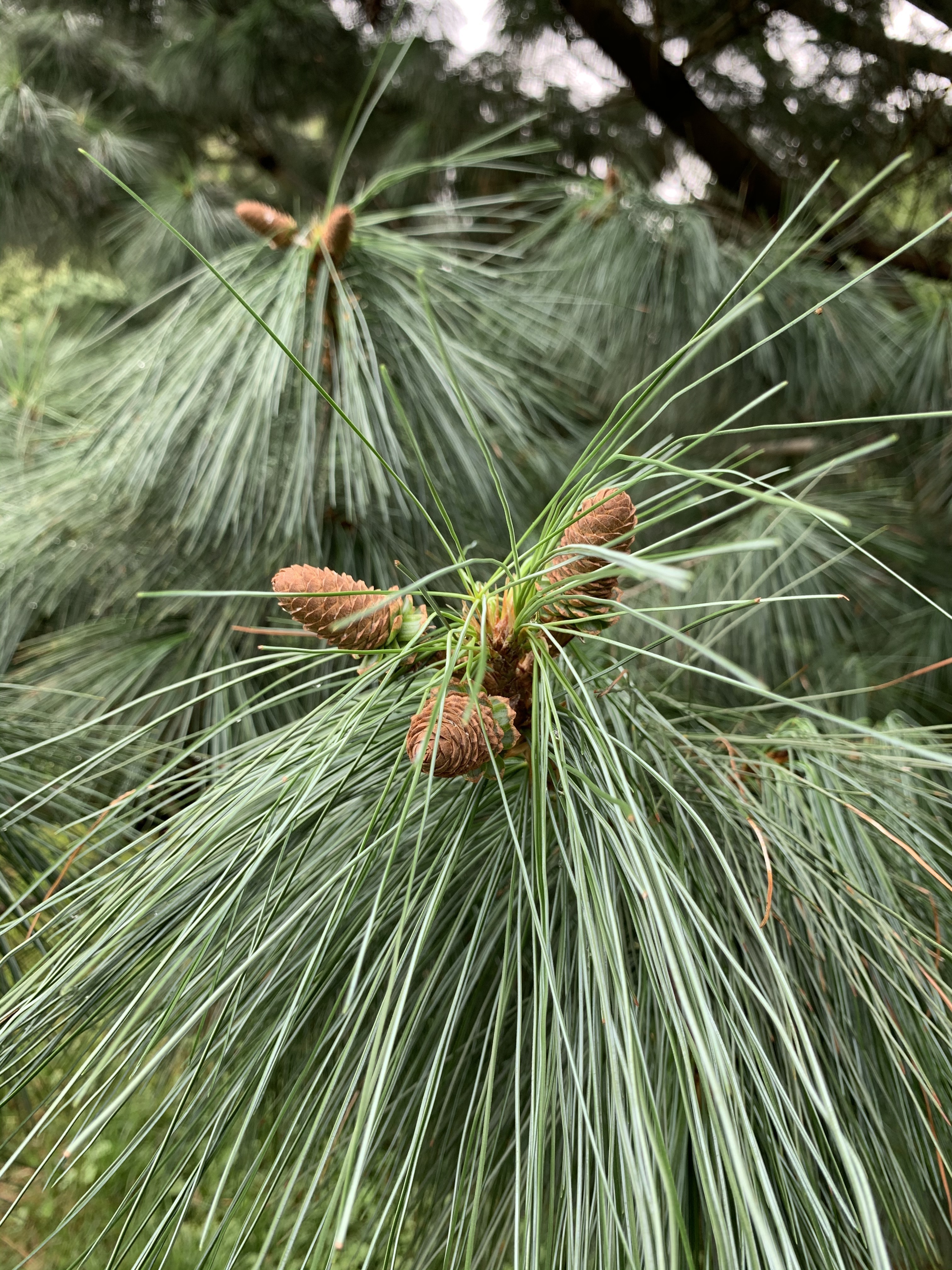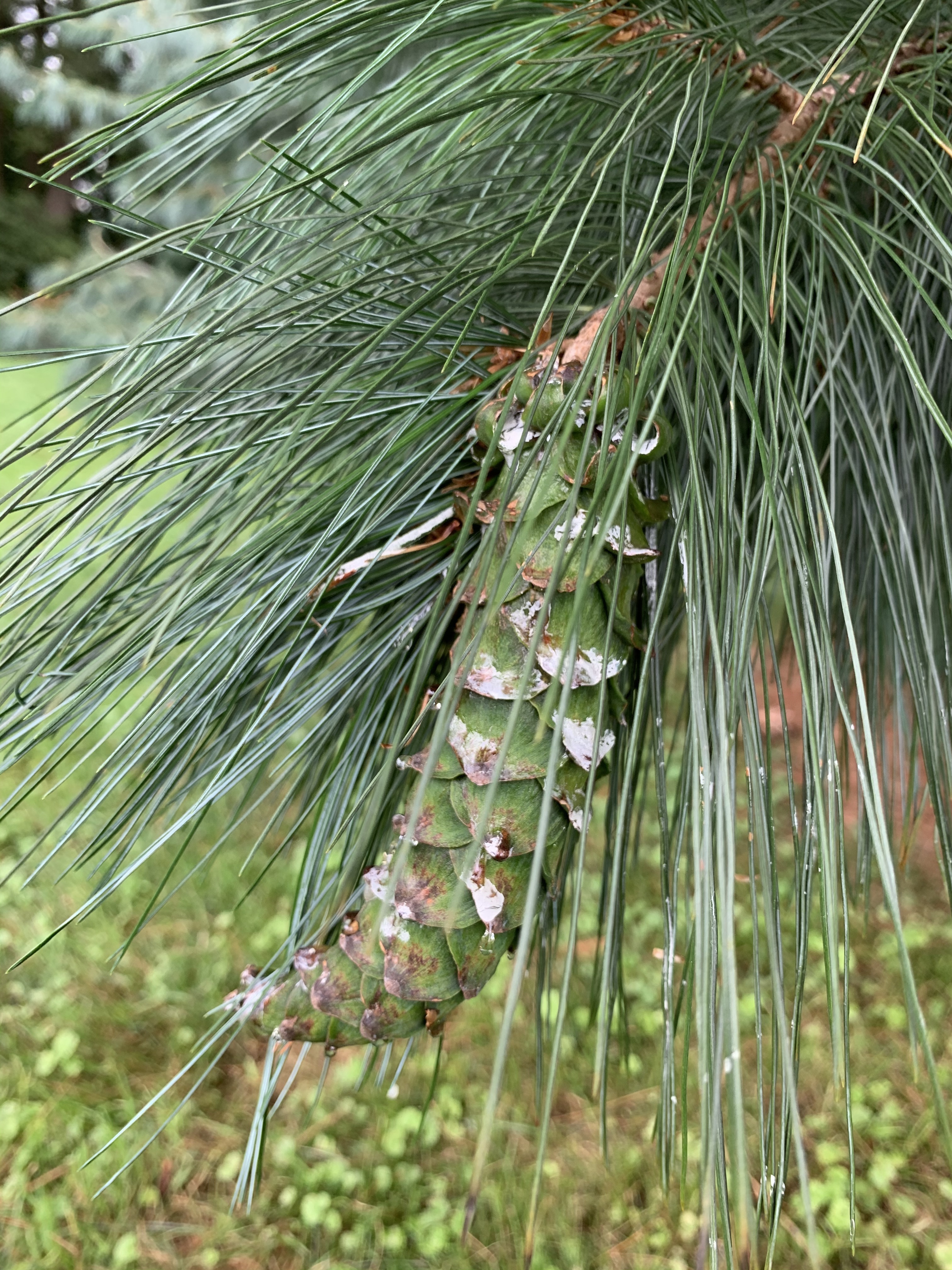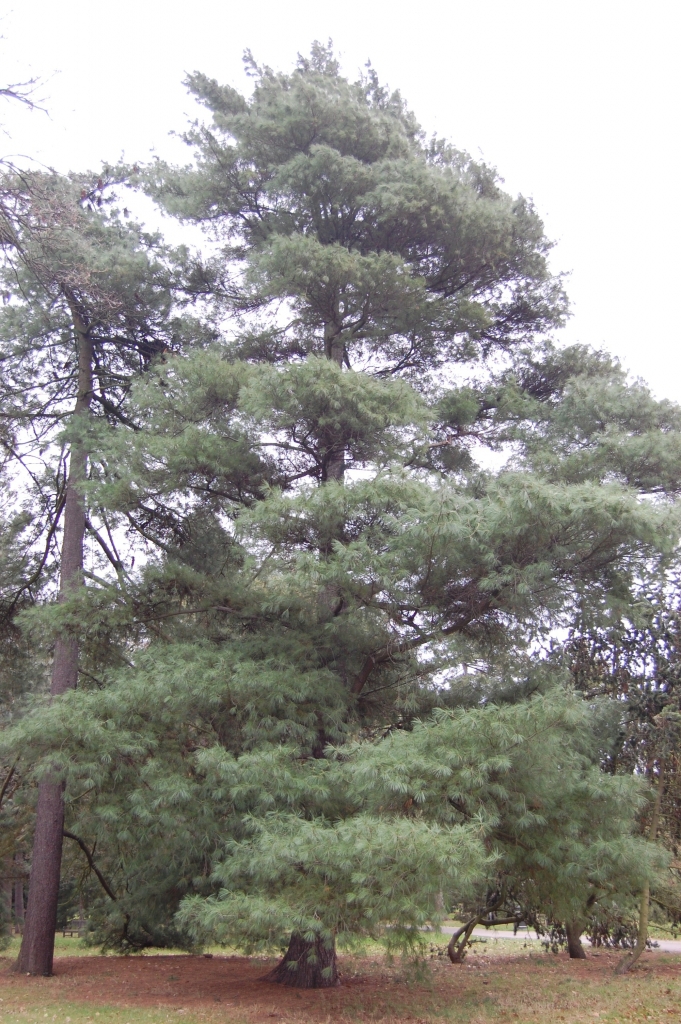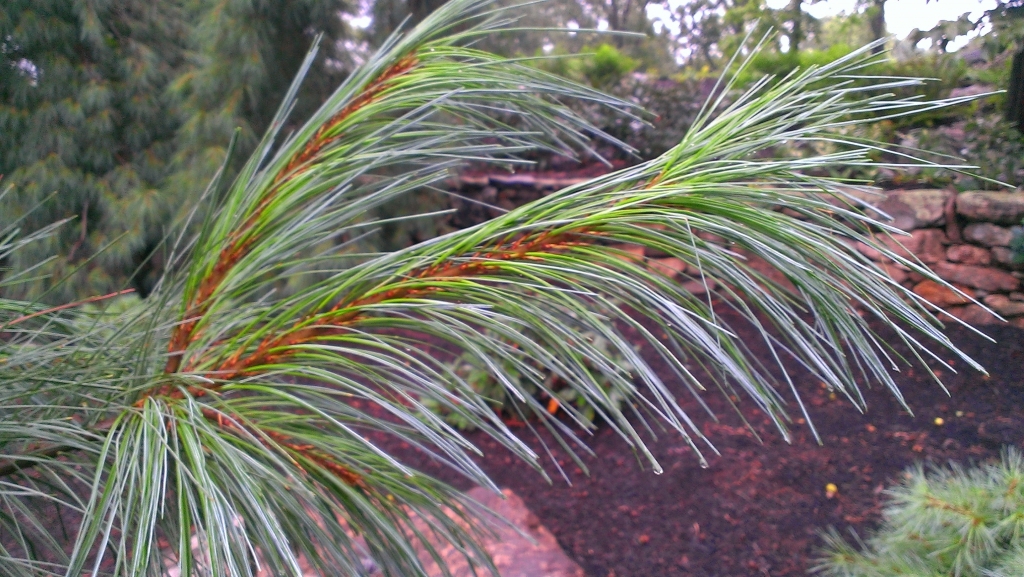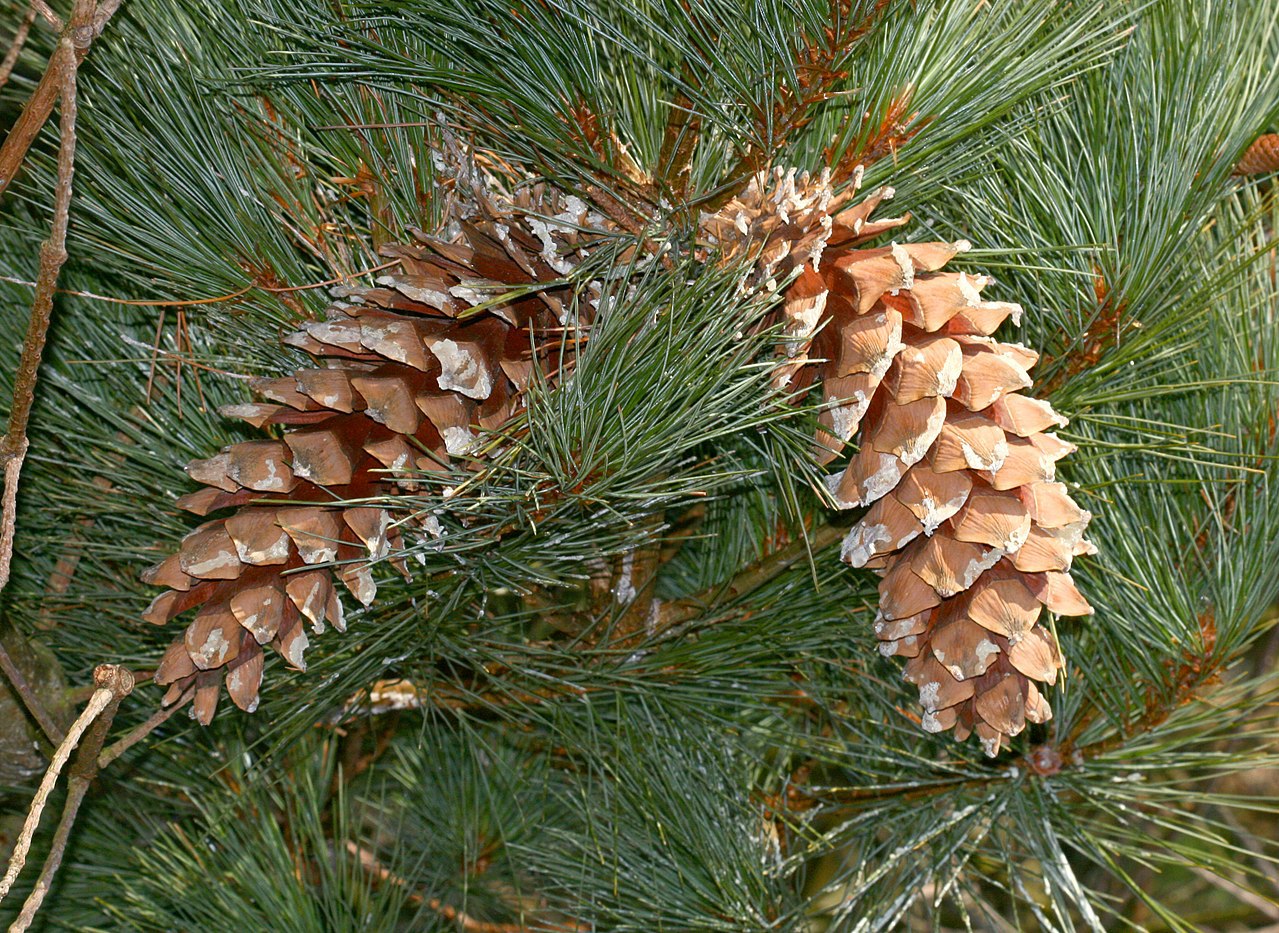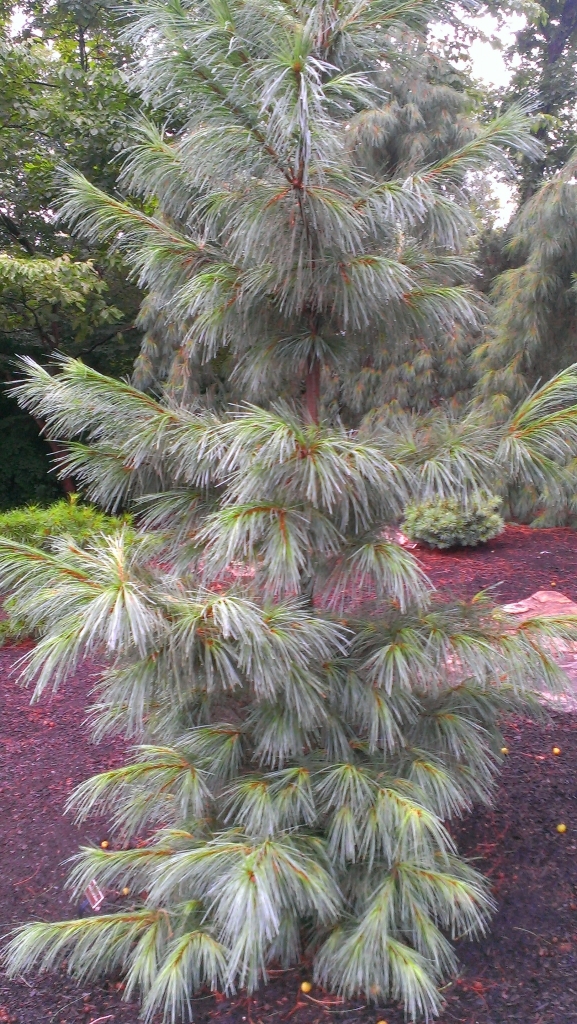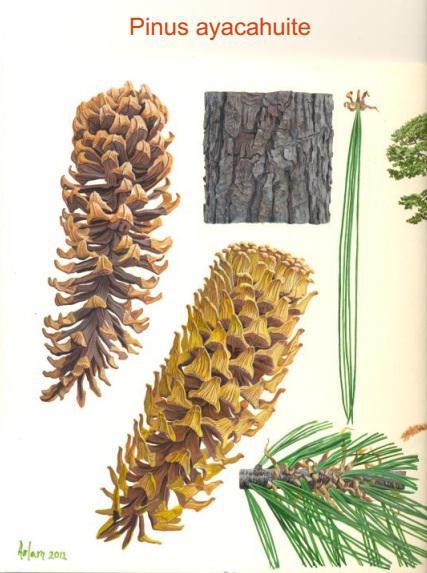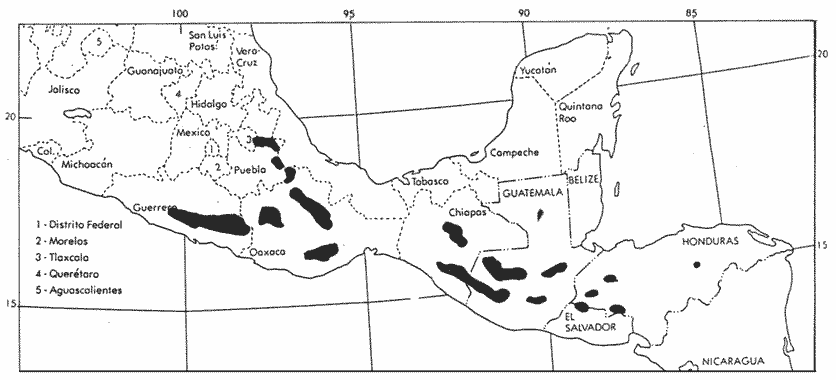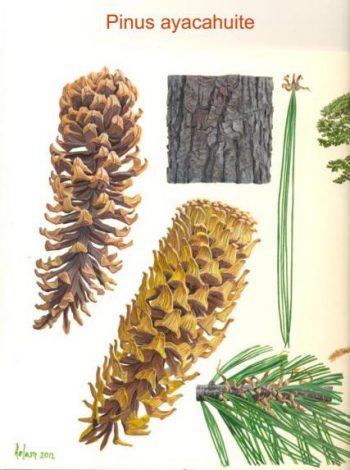
subgenus Strobus (Lemmon), section Quinquefoliae (Duhamel), subsection Strobus (Loudon).
Pinus ayacahuite, as described in 1838 by Christian Gottfried Ehrenberg (1795-1876) ex Diederich Franz Leonhard von Schlechtendal (1794-1866), in Linnaea 12, is commonly known as Ayacahuite pine or Mexican white pine in the English language. In other languages, Ayacahuite or ayaucuáhuitl in native Nahuatl. In Spanish dialects in regions of Mexico - as a´cxua´t in Totonaca, in Puebla; as acalocote in Puebla; as acalocahuite in Veracruz; as pino cahuite in Hidalgo; as ocote blanco or pino real in Oaxaca; and as ocote gretado, pinabete, pino tabla in Chiapas.
The scientific name is derived from an Aztec name for the tree that honors its stature and habitat, ayauhquahuitl, or "cloud tree." The 16th century monk, Bernardino de Sahagun, described it in his History of the Things of New Spain. He wrote (in Aztec), "it stands towering, highest of all."
Ethnobotany. This species provides one of the most important and sought-after softwoods of Mexico. Formerly very large trees were common, yielding large volumes of an attractive, easily worked timber that provided the raw material for furniture and finish carpentry throughout the country. Those great stands have been largely depleted now, especially in southern Mexico and Mesoamerica
Description. Mexican white pine is an evergreen coniferous species of tree that grows to mature heights of 150 feet (45 m) tall with a 6 foot (200 cm) wide, straight, round trunk, measured at breast height. The tree's crown is pyramidal to conical in shape with regular branch whorls, becoming more irregular and open in old trees.
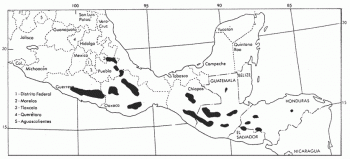
Distribution. This species is native to Mexico - the states of Veracruz, Puebla, Hidalgo, Tlaxcala, Guerrero, Oaxaca, and Chiapas; also native to Guatemala, El Salvador and Honduras. P. ayacahuite typically grows as an emergent tree in mixed stands with other pines, and firs, at elevations of 6,500 to 10,000 feet (2,000 - 3,200 m) above sea level. It grows best on well-drained moist loamy soils on relatively cool, moist sites, such as in riparian areas.
Hardy to USDA Zone 7 - cold hardiness limit between 0° and 10°F (-17.7° and -12.2°C).

